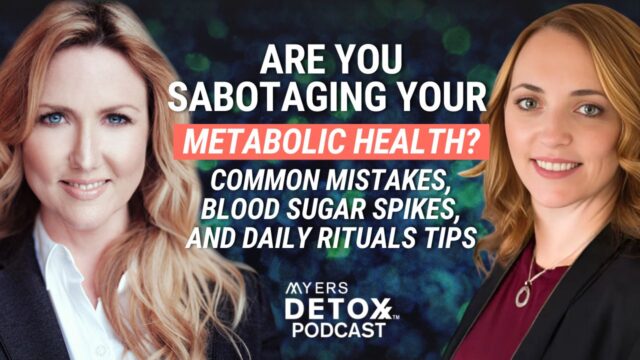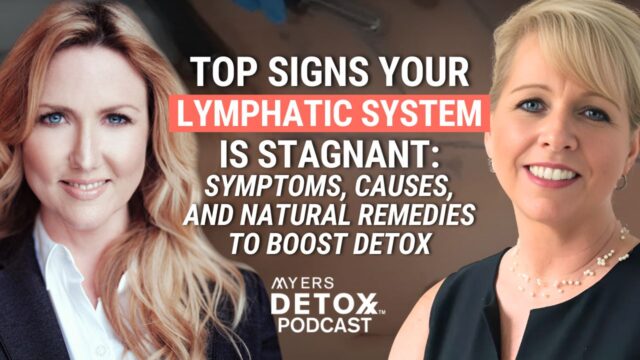Nutritional Grail, my recently published book (free download here), explores ancestral dietary wisdom, contemporary nutritional science, and the socioeconomic forces behind the most radical dietary shifts in human history. Despite covering vast amounts of information, one subject I only briefly touched upon in the book is humanity’s favorite libation—coffee.
After petroleum (and possibly rubber) coffee is the world’s second- or third-most valuable commodity (disregarding illegal commodities).[1] The global coffee market is worth at least $70 billion annually, and perhaps as much as $100 billion.[2] Each year, more than 500 billion cups of coffee are consumed worldwide, and according to industry analysts, the market is far from saturated.[3]
In the US, for example, coffee consumption in 1946 more than doubled current consumption (48 gallons per person annually compared to 23 gallons).[4] For coffee producers and sellers, these figures represent growth potential, especially as nutritional science increasingly demonstrates that coffee, when consumed in moderation, does have significant health benefits.
Contaminated Coffee?
In recent years, several companies have been calling attention to mycotoxins, which sometimes contaminate coffee beans, though generally in harmless amounts. Fungi live on many foods, including coffee, wine, beer, wheat, rye, chocolate, raisins, and peanut butter. Fungi are not necessarily harmful, but to protect themselves against bacteria, they sometimes produce mycotoxins, which can indeed be dangerous. There are two basic types of mycotoxins affecting coffee—aflatoxin B1 and ochratoxin A (OTA).
Aflatoxin is a dangerous carcinogen, but much less commonly affects coffee than does OTA; OTA is highly toxic to the kidneys and is possibly carcinogenic. The standard roasting process does not completely destroy OTA.[5] During the late 1980s and early 1990s, awareness about OTA reached critical mass, causing heightened concern throughout the coffee industry. A study commissioned by the European Coffee Federation found that regulating OTA to 5 parts per billion (ppb) would cause 7 percent of all coffee imports to be rejected. Such regulation would affect all coffee-exporting countries.[6]
In 1995, the UN’s Food and Agricultural Organization (FAO) began working with the coffee industry to reduce OTA contamination. Their program was highly successful, resulting in mean OTA levels dropping from 2 ppb in 1995 to 1.3 ppb in 2004. Roasted coffee sold within the European Union must now have less than 5 ppb OTA; the maximum for instant coffee is 10 ppb. In the US, the FDA is currently conducting a multiyear study to determine if regulatory limits on OTA are necessary.[7]
Instant coffee has been shown to have more than twice as much OTA as both roasted and ground coffee.[8] Additionally, decaffeinated coffee has been shown to have significantly higher amounts of OTA compared to normal coffee.[9] It’s therefore wise to choose traditionally roasted coffee over both instant and decaf. But due to improved production practices, mycotoxins are largely a nonissue today, especially concerning traditionally roasted coffee. Furthermore, coffee contains several compounds that either neutralize or greatly diminish the carcinogenic potential of mycotoxins.[10]
Built-in Protection
Coffee contains several anticarcinogenic and antimutagenic chemicals, including caffeine, kahweol, cafestol, and various polyphenols (a kind of antioxidant).[11] Additionally, coffee is an extremely potent source of antioxidants. My book, Nutritional Grail, contains a detailed discussion on the importance of antioxidants, but briefly put, antioxidants neutralize free radicals.
Free radicals are a primary source of inflammation. Chronic, systemic inflammation is now recognized as a primary risk factor of numerous degenerative diseases including heart disease and cancer, the two leading causes of death in the US. In 2003, for example, the American Heart Association and the Centers for Disease Control issued the following landmark statement regarding inflammation and its impact on heart disease:
“Basic science and epidemiological studies have developed an impressive case that atherogenesis is essentially an inflammatory response to a variety of risk factors and the consequences of this response lead to the development of acute coronary and cerebrovascular syndromes.”[12]
An Antioxidant Powerhouse
Joe Vison, a PhD chemist from the University of Scranton has remarked, “Americans get more of their antioxidants from coffee than any other dietary source. Nothing else comes close.”[13] Vison is an antioxidant expert who has published sixteen peer-reviewed papers on the subject. According to his research, Americans consume 1,299 milligrams of antioxidants per day from coffee and only 76 from bananas, the highest-ranking fruit/vegetable. A 2008 study published in the Journal of Nutrition drew similar conclusions, finding coffee to be a significant source of antioxidants and the beverage with the highest polyphenol (a type of antioxidant) concentration.[14]
Additionally, a 2010 study published in the European Journal of Clinical Nutrition identified the100 richest sources of polyphenols as well as the top 100 sources of total antioxidants. Coffee holds the 36th position for polyphenols (and 37th for total antioxidants), but many of the highest positions belong to herbs and spices, including cloves, peppermint, star anise, oregano, celery seed, sage, and rosemary.[15] We generally consume these herbs/spices in much lower quantities than coffee. Therefore, as the aforementioned studies found, coffee is among the most significant sources of antioxidants in terms of total antioxidants gained through typical servings. Incidentally, cacao powder and dark chocolate, two foods that pair deliciously with coffee, rank 4th and 8th in terms of polyphenols and 24th and 13th in terms of total antioxidants, respectively.
Click here for the top 100 lists.
Healthy Caffeine?
Caffeine is a stimulant—a drug affecting the same areas of the brain as cocaine, but in very different ways. Eighty percent of adults in Western society consume caffeine regularly, making it the world’s most popular psychoactive substance.[16] Could this drug possibly have health benefits? When consumed in moderation, and preferably not too late during the day (to prevent restless sleep), the scientific literature overwhelmingly says yes. When consumed excessively (more than 1 cup per day), however, caffeine can push cortisol levels too high, especially for those already enduring increased stress.[17] Cortisol is necessary in small doses and short bursts, but chronically elevated doses increase blood pressure and blood glucose levels, thereby increasing heart disease and diabetes risks, especially for those already prone to these diseases.[18]
Caffeine and Athletic Performance
Caffeine can enhance athletic performance by increasing the amount of fatty acids in the bloodstream, thereby burning fat for fuel and preserving carbohydrates, which later can be burned for energy.[19]
Caffeine and Weight Loss
Caffeine is a thermogenic compound, meaning it creates heat and can therefore increase metabolism as well as fat oxidation. A study published in the American Journal of Clinical Nutrition, for example, showed that caffeine increases energy expenditure dose dependently while also producing a positive thermogenic response.[20] Caffeine also has been shown experimentally to increase fat oxidation (more effectively in lean individuals than in obese individuals).[21] Caffeine is therefore not a panacea for weight loss, although it does have positive metabolic effects when consumed in moderation.
Caffeine and Cognition
Caffeine has been shown experimentally to enhance learning, especially in situations where information is presented passively, but not when information is learned intentionally.[22] Additionally, a study just published in Nature Neuroscience has shown that caffeine enhances long-term memory consolidation.[23] Michael Yassa, a John Hopkins University scientist and one of this study’s authors commented,
“We’ve always known that caffeine has cognitive enhancing effects, but its particular effects on strengthening memories and making them resistant to forgetting has never been examined in detail in humans. We report for the first time a specific effect of caffeine on reducing forgetting over 24 hours.”[24]
Caffeine and Mood
In low doses, but not high doses, caffeine reduces anxiety and improves both mood and concentration.[25] There is also evidence that caffeine decreases rates of depression, especially in women, although researchers acknowledge that caffeine’s effects on depression are poorly understood and understudied.[26]
Caffeine and Dehydration
Sometimes caffeine is blamed for dehydration. Clinical studies, however, suggest this happens only above 400 mg per day, or about three to four cups of coffee.[27] I suggest limiting your coffee consumption to one (or maximum two) cup per day.
Conclusions and Recipe
Besides the information discussed above, many epidemiological studies associate coffee with decreased rates of chronic diseases including type 2 diabetes,[28] cardiovascular disease and stroke,[29] liver cancer,[30] and colorectal cancer.[31] Coffee can indeed contain dangerous mycotoxins, but modern production processes have made this threat negligible. Coffee is a veritable antioxidant powerhouse. Antioxidants combat free radicals while preventing inflammation, a primary driver of many degenerative diseases. Caffeine acts as an antioxidant while also benefiting athletic performance, metabolism, cognition, and mood.
What’s the best way to enjoy coffee? Of course, many people enjoy coffee with cream/milk. But why is this combination so popular? Quite simply, the richness of fat combines deliciously with coffee, and many sources of fat work great. I sometime make iced coffee, for example, with homemade almond milk. But for hot coffee, my favorite fats are butter and coconut oil, both of which are veritable health foods. I explain in great detail in Nutritional Grail why butter and coconut oil are healthy. The secret to combining butter/coconut with coffee is blending. Don’t just stir the butter/coconut oil into your coffee. You need to make an emulsion. Follow the recipe below.
Rich Coco-Butter Coffee
- 1 cup coffee, brewed to your liking
- 1-3 teaspoons virgin coconut oil
- 1-3 teaspoons unsalted organic butter
- First, brew your coffee. I put 1 tablespoon of ground coffee into my French press, add 1 cup hot water, wait 3 minutes, then pour the brewed coffee into the blender.
- Next add your coconut oil and butter. Blend well to emulsify the fat. Be sure to only use high quality, virgin coconut oil and organic, preferably grass-fed, butter.









